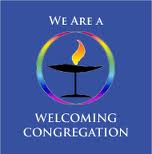Team Expenses
Service Leader Handbook
Mountain Light Unitarian Universalist Church
Note: This version was revised by Donna Waddell and Kasey on 2012 February 13.
This online version of the Service Leader Handbook differs slightly from the hard copy that you may have received. One important difference is that email addresses are not visible (to thwart trawlers), and web addresses are hidden under links to make the text easier to read. You should click on the links ("email" and "click here") to access the addresses. Also, since web pages are more easily edited than hard copies, some of the text may read somewhat differently, too. The differences will be highlighted, if ever there is a significant edit.
Terms and abbreviations frequently used are highlighted in blue when first introduced.
Please Click here to download the RTF version of this document.
Introduction
At all Unitarian Universalist churches, we are called to give, among other things, our time and our talent. We sincerely appreciate your interest and participation in our Service Leader program. Thank you for answering the call!
Your goals as a Service Leader (SL) are to serve as the welcoming host to the person presenting (Presenter) the program or sermon (Program) and to promote and ensure spirituality in the worship service through maintaining the ambiance, and to provide and orchestrate the Order of Service (OS).
Ins and Outs of This Handbook
This handbook is intended to guide you, step by step, through the SL process. It will help you to know where to go for instruction when you begin preparing for your Presenter's service. Please review it now in order to know what is expected of you and what resources are available to you.
We have attempted to cover most of the possible scenarios that you might encounter while planning your OS, but you should use your own judgment to adapt this process to your particular situation. If you have any questions or concerns, please do not hesitate to contact any member of the Sunday Service Team (SST): Gary Kaupman, Team Lead (email); Donna Waddell (email); and Kasey Castleberry (email).
Preparing the Order of Service
To get started, pull out your OS Template and our UU hymnal (Singing the Living Tradition) to use as references. You may borrow the hymnal from church, but please be sure to return it when you are finished! When planning your OS, it may help to see some from previous Sundays. You may also consult the online archives (Click here) to view examples.
Next, no less than three weeks before the service, you should make your initial contact with your Presenter, to introduce yourself as her Service Leader. Communication with the Presenter is very important, so you will want to avoid using our abbreviated terminology in your communications and be as professional, yet friendly, as possible. The Service Leader Coordinator (Coordinator), currently Kasey, will send you the Presenter's contact information, along with any of the information already provided.
Normally, the Coordinator will already have received a photograph, a presentation title (Title), and a brief description of the program (Blurb) for our newsletter and website. He also should have received a brief biography (Bio) that you will use to introduce the Presenter. So you will not need to worry about these tasks. In the rare event that these are unavailable at the time that you agree to act as the SL, the Coordinator will discuss with you how to best acquire them.
If your Presenter is new to Mountain Light, though she was likely already informed, in your initial contact remind her that, traditionally, a sermon at MLUUC runs for approximately 20 minutes, with ten minutes for discussion directly after her presentation and usually before the Closing Hymn and Closing Words. Then ask her if she would like to see a sample OS and offer to send her one. (You can send her the link to the archives or copy and paste a sample directly into an email message.)
There are several possibilities of which you should be aware. The Presenter might wish to pick all, some, or none of the hymns and/or readings. She may want to read all or some of the words or have you read all or some of them. She may prefer to lead the mediation or prefer you to lead it. Often Presenters, especially ministers, will want to select the all or part of the OS elements, because they want to present a cohesive Sunday service experience. No one knows better than the Presenter which hymn will compliment her sermon.
So, be sure to clarify her preferences before you proceed. In your initial message to the Presenter, ask if she would like to make any or all of the selections for service. Ask her if she would like the meditation to be silent or guided and if she would prefer to handle this. You should offer to make these selections and to lead the meditation in case she would prefer not to do it.
If she wishes to create the OS in whole or part, you should explain that we have a list available of the hymns that we know (click here), and that if she prefers a piece of music not on that list, then she should be prepared to lead us in song. Remind her that she needs to provide you with her OS, including the numbers for hymns and readings, no later than the Wednesday before her service. This will give you enough time to convey the music to be used to the pianist (Richard Wilson). You should also forward her OS to the Coordinator, who will make sure that it is printed in the Sunday Service Bulletin, when available.
Your Presenter is welcome (within reason) to break with tradition if she has ideas that fall outside the OS Template or selects hymns and readings outside of our UU sources, but do not encourage this. If you, as the SL, are uneasy about the appropriateness of her ideas or how they might be received at Mountain Light, before agreeing, check with a member of the SST.
Lastly, be prepared to provide detailed directions to the church. Ask your Presenter if she would like directions and if she has any questions about either the service, the area, or anything else with which you might be able to help. If you can not answer her question, assure her that you will pass them on to someone who can, and then pass them to someone on the SST or another appropriate person.
Enacting the Order of Service
Arrive Early: You should arrive before Fellowship begins to make sure that you have everything ready for the service, and you should be there to greet the Presenter when she arrives. As her host, make introductions if they are needed, and make her feel welcome at MLUUC. Offer her refreshments, and be sure she knows where the restrooms are located.
Review the OS with the Presenter: You should have already determined this, but review with the Presenter what roles you each will play and address any last minute questions or concerns. Make sure the Presenter has everything that she needs for her Program.
Setup Checklist:
- Be sure the microphone is turned on and adjusted to a convenient height for both the Presenter and for you.
- Fill in the white board (if used) with the primary points of the OS (hymns, readings, program, etc.) or make sure it is correct if someone else has already done it.
- Make sure that there are candles laid out (about ten with more ready if needed) for Joys and Concerns and that the lighter works.
- Make sure the offertory baskets are in the podium.
- Ask someone on the SST for help if necessary.
Lay Out Your Materials: Have the items that you will need to read laid out on the podium in a sensible order. You will need printed copies of the OS, the Welcoming Statement, any words that you will be reading (or have them book marked in the hymnal or appropriate book), the Bio introduction, and any other special material.
Ring the Chime: At 10:30, you ring the chime to call congregants from Fellowship and to be seated for the worship service.
Begin the Service: As Sunday Service Leader, you are responsible for leading the first part of the OS. You will greet everyone with a hearty "Good Morning" and ask if there are any announcements. You will read the Welcome Statement and ask if we have any visitors. Then you might announce the Sign of Peace and invite the congregation to greet one another.
If appropriate, introduce the Presenter briefly: If the Presenter has expressed interest in leading a portion of the service at some point before the Program, introduce her briefly at that point in the service and invite her to come up to the pulpit to lead these features. Otherwise, you will lead these functions.
Lighting the Chalice: Unless otherwise agreed, you will read the Chalice Lighting and/or Opening Words. If the Presenter reads the words during the Chalice Lighting, you will probably light the Chalice. Sometimes, however, you may want someone from the congregation (especially a youth) to light the chalice while the words are being read.
Continuing the Service: If the Presenter has not asked to do them, you will likely be responsible for leading the Responsive Reading, leading the first hymn, and lighting the first candle for our Candles of Community. You would then invite others to light their own. After the last person has lit his candle, you will light one final candle "for all those Joys and Concerns too close to our hearts to share". Usually, this is followed by a meditation (silent or guided). Some Presenters, especially many ministers, will prefer to lead this.
Conduct the Offertory: The Offertory (taking the collection) is handled by you, the SL. Ask one or two members of the congregation to help with this (good choices would be the Treasurer and youth). You have already made certain that the baskets were on a shelf in the pulpit. It is a temptation to fill "dead air" by joking that this is the most important part of the service. Please try to avoid saying that! Instead, there are words of offering available in the hymnal and online. After the baskets have been given to the Treasurer (or other responsible party), ask the congregation to stand and sing the Doxology. It is printed inside the front cover of the hymnal.
Introduce the Presenter: You should already have laid out the Bio to introduce the Presenter. It may be advisable to write out additional phrases to remind you to mention her presentation to the congregation. The Presenter will take over at this point. On some occasions you might need to keep watch on the time and hint to the Presenter, especially lay speakers, that time is running out. If you are uncomfortable with that, get the attention of someone on the SST and they will intervene if necessary. Normally, we are not that strict with time, however, and would not interrupt a Program except under pressing circumstances.
Introduce the Discussion: After her Program, you thank the Presenter and introduce the Discussion period by simply asking if anyone has any questions or comments. The Presenter will handle the Discussion from that point. If the Discussion is lively and has gone over ten minutes, it is your responsibility to step up, cut off discussion, and suggest that discussion can continue after the service or maybe over lunch if the Presenter is up for that.
Closing the Service: If the Presenter is not leading the closing portion of the service, ask the congregation to stand, sing the final hymn and read the Closing Words. Extinguish the Chalice.
About the Music
When hymns are selected by the Presenter or by you, email Richard Wilson (click here) with the page numbers so he can do any preparation he needs to do in advance of the service. If the pianist will not be available, there is a CD with 30 popular hymns from the hymnal (Singing the Living Tradition) that can be used for musical accompaniment. Please check with someone on the SST about using the CD.
The online list of hymns (click here) specifies which songs we know well, which are on CD, and even has some videos (You Tube) for some (although the version might vary to some degree).
Also, some Presenters will use songs outside the UU tradition, often providing their own music or leading us in song themselves. For example: Rev. Heather Collins normally has her husband, David Bowen, play guitar to popular music; Rev. Dr. Edward Frost occasionally picks a hymn that he likes even though we may not know it, and then he will lead us in song.
Follow Up
Please feel free to invite your Presenter to join us for lunch after the service. If we are eating out, unless you or someone else is feeling particularly philanthropic toward the Presenter that day, make it clear that our lunch together is always Dutch treat.
It is also a nice touch to email a thank-you note to the Presenter after the service. You may, of course, express any genuine appreciation for the topic or the visit in general. Ask about their experience and report any of their joys and concerns to the members of the SST, so that we may address them and possibly invite them back.
Documents You Can Expect to Receive
Once you have agreed to act as a SL for a particular Presenter, the Coordinator should send you the Title and Blurb of the Presenter's Program. He should also send you her Bio and/or other introductory material that he may have for her. That same message should also contain a list of any items of particular importance that needs addressing. He can send you a sample introductory message if you would like one, as well.
If you, as the SL, have any questions or if you are having difficulties in communicating with your Presenter, please do not hesitate to contact the Coordinator. His job is to help you with your service anyway he can.
Service Leader Resources
Mountain Light UUC has numerous traditional sources for the hymns and words that you will need for your service.
Singing the Living Tradition: Our hymnal has both hymns and words for just about every part of the service. You can find a helpful contents section in the front, and there are numerous indexes in the back of the hymnal to help you locate readings for specific topics.
MLUU Connections: This supplementary website has an entire section devoted to Sunday Services with many SL tools and resources.
- The OS template
- OS Archive
- Welcoming Statements
- Readings not in the Hymnal
- Speaker Biographical Information
Unitarian Universalist Association websites:






